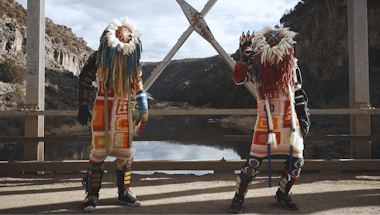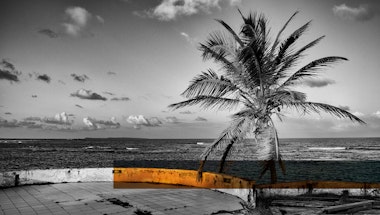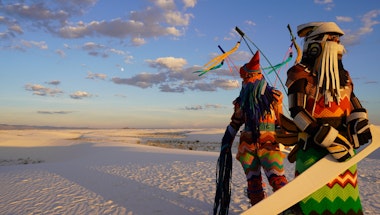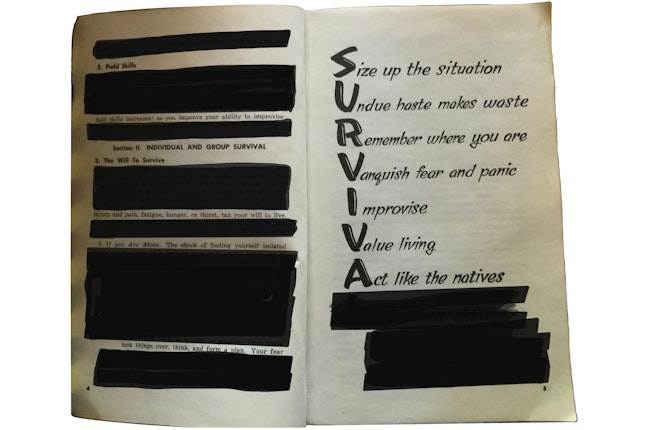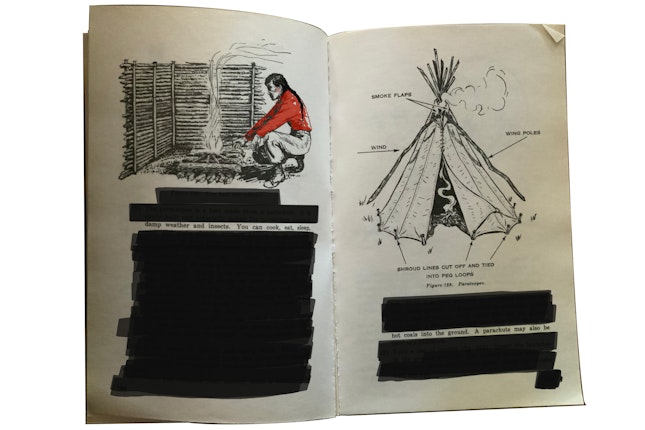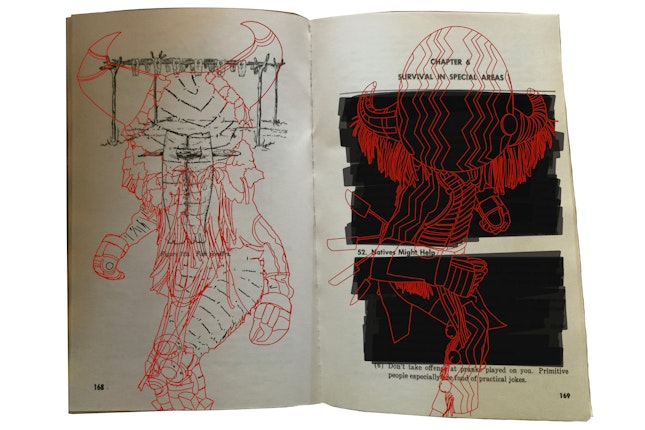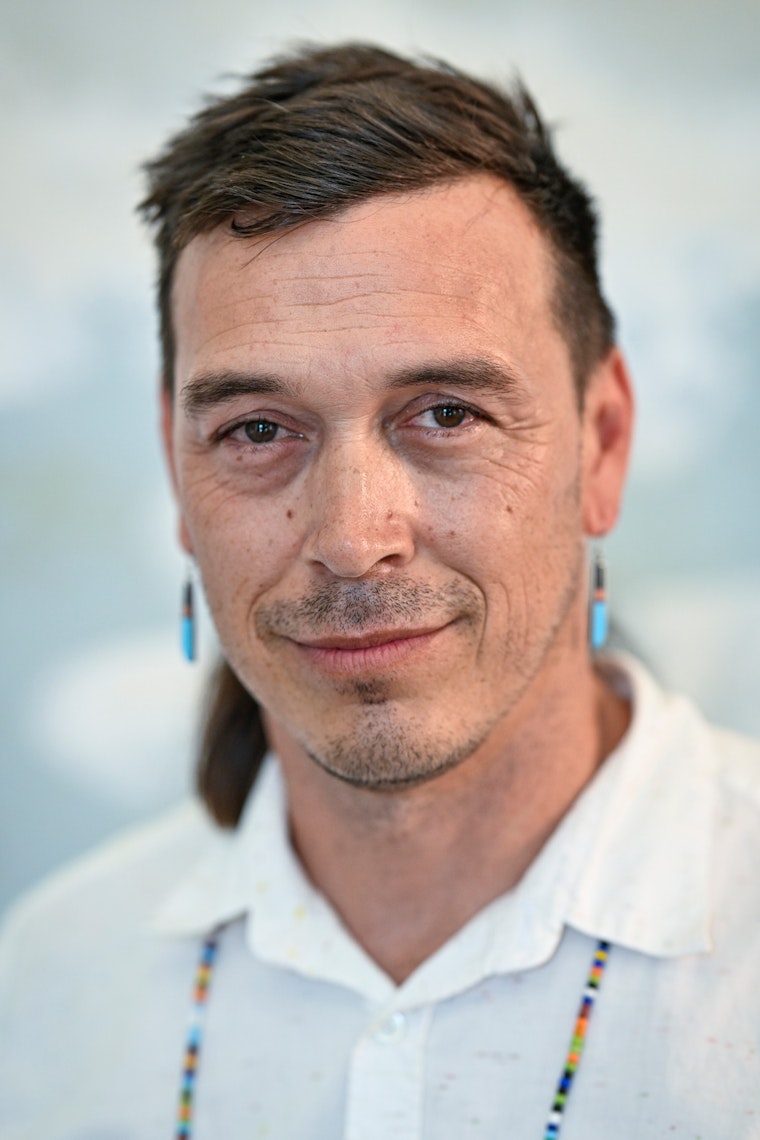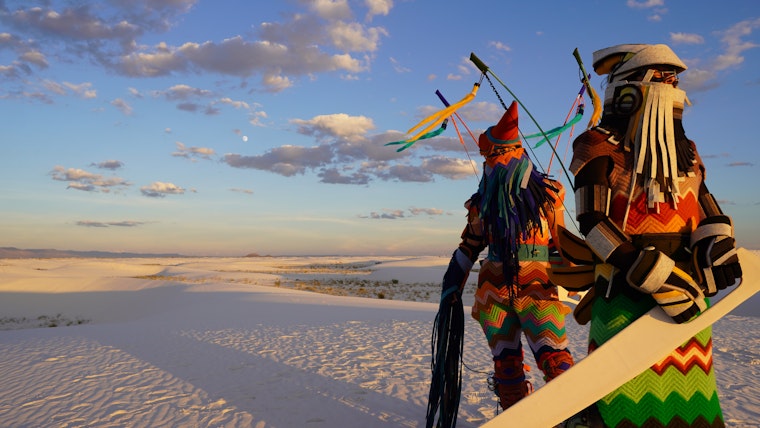
What the Past Teaches the Future
Cannupa Hanska Luger is an enrolled member of the Three Affiliated Tribes of Fort Berthold, with Mandan, Hidatsa, Arikara, and Lakota as well as European descent. Building on this rich heritage, he has developed the concept of Future Ancestral Technologies as an Indigenous science fiction. Early in his life, the worldview imparted to him by Indigenous elders allowed him to see the myth building in American traditional education and the necessity of myth in human spaces. His work speaks to a future time when human society has moved beyond a system in which those with power inflict indignity onto those without it. His art repurposes the waste byproducts of capitalism in different contexts, much as past objects are now recontextualized in museums and viewed as relics.
As part of the Soros Arts Fellowship, Luger will re-envision a 1970s-era U.S. military survival propaganda acronym “SURVIVA,” in which the A stood for “Act like the Natives,” teaching soldiers to steal Indigenous knowledge from those subjected in combat. A creative companion to his Future Ancestral Technologies, this project serves as a survival guide for the future, deconstructing military concepts used to destroy Indigenous populations. Onto redacted pages, Luger will insert theories and plans that assert Indigenous knowledge as critical to survival.
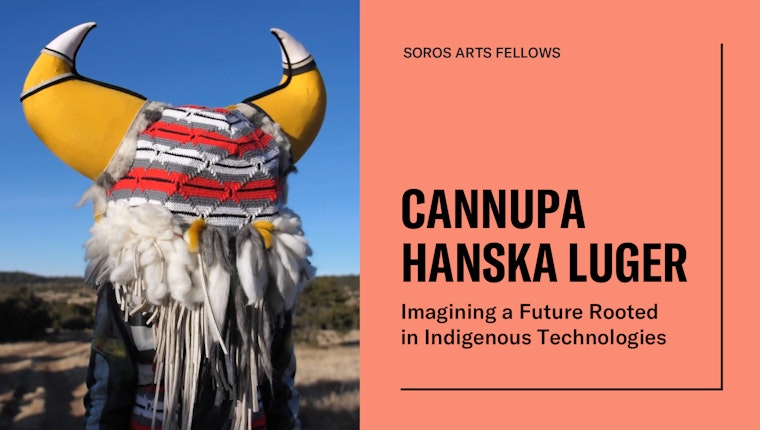
To the Indigenous cultures from which Luger comes, time is not linear. Not only are present generations accountable to those in the future, but ancestral knowledge and understanding is essential to survival now. Many of the fellows share in the belief that past knowledge must inform our present as a gateway to the future—aligning with the idea that we must live with nature and not force ourselves upon it. Learning to adapt to the land, responding to the environment rather than bending it to our purposes, enhances our lives and ability to survive.
“Land is not something that you can own. We belong to the land. Everything that represents who we are as human beings, beyond our biology, comes from what it means to belong to a place from a deep-time relationship, to practice reverence. And so the idea of possession of land and place is, in my opinion, the source of a lot of the human violence that we’ve inflicted on one another and on the Earth.”
— Cannupa Hanska Luger
Luger believes his “art is becoming.” To endure the catastrophe of climate change we have created, we must learn this way of listening, adapting, and becoming closer to the Earth ourselves.
